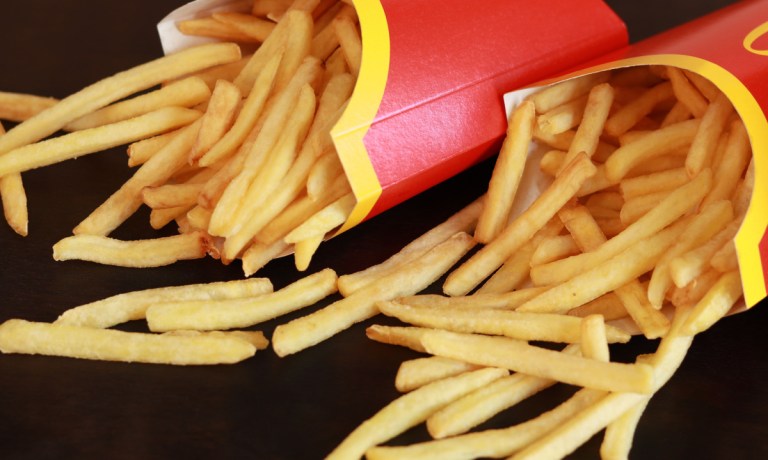
“Would you like fries with that?” is a question you won’t hear at McDonald’s Australia’s new pop-up shop, a fries-only restaurant. This concept may be a gimmick, but as quick-service restaurants (QSRs) test increasingly limited and occasion-specific concepts, this may not be the last we see of the concept.
On Monday (July 17), McDonald’s Australia (colloquially known as Macca’s in the country) announced that it will open the fries restaurant in Darling Harbour, Sydney. The shop, roughly 15 feet tall and designed to look like a carton of fries, will sell medium-sized orders of fries alongside sauces.
This so-called Macca’s Fry-Thru is part of the restaurant’s rollout of branded experience as a global sponsor of the FIFA Women’s World Cup 2023, and according to local outlet Secret Sydney, it will remain open until Aug. 20.
“We are excited to create unforgettable experiences for fans across the country at the FIFA Women’s World Cup 2023,” McDonald’s Australia Brand Manager David Morris said in a statement. “Based in Darling Harbour, our giant Macca’s Fries, also known as the Fry-Thru, is the perfect spot for all football fans to come together to fuel up on our iconic Fries before or after a game.”
While this pop-up may just be a promotion for now, it comes as part of a broader trend of major QSRs designing increasingly limited store concepts. For instance, many brands have tried pickup-only and drive-thru-only locations.
Last month, Starbucks Chief Financial Officer and Executive Vice President Rachel Ruggeri shared in a Q&A for TD Cowen’s Future of the Consumer Conference that the restaurant giant is considering opening delivery-only stores to more efficiently meet consumers’ demand for convenience.
“It’s important to … have stores that meet customers for different occasions,” Ruggeri said. “When we think about our opportunity in the future, it’s how do we leverage our portfolio to unlock capacity, but also in a way that best meets the customer needs and demands. And so, that’s going to be different versions of drive-thru stores. It’s going to be delivery-only stores as well as different versions of pickup stores.”
Notably, however, Chili’s recently pulled the plug on its pickup- and delivery-only location.
Still, rising food costs are demanding innovation. Data cited in last month’s edition of PYMNTS’ “B2B and Digital Payments Tracker®,” a collaboration with American Express, “Inflation Puts Technology on the Menu for Restaurants,” revealed that only 92% of restaurant operators that view food costs as a significant challenge. Plus, additional research highlighted in the report revealed that 75% of restaurant operators plan to adopt new technology this year to address their labor and cost challenges.
Many restaurants have been reevaluating their menus in light of rising food and labor costs. By trying out highly specialized concepts — such as, say, a fries-only spot — restaurants can boost efficiency by streamlining food preparation and production, getting orders fulfilled quickly while focusing on the most in-demand items.
Plus, the rise of virtual brands, which are often highly specialized, offering only, say, grilled cheeses or chicken tenders, may help pave the way for highly specific brick-and-mortar restaurant concepts, especially considering that a handful of these virtual brands have made the shift into the physical world.